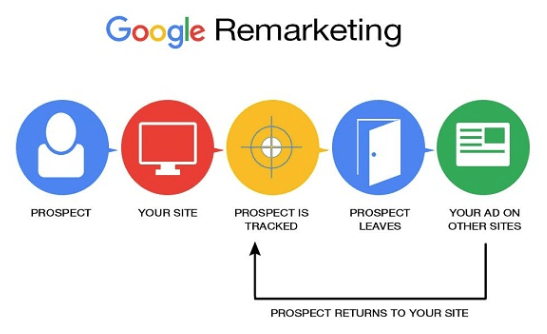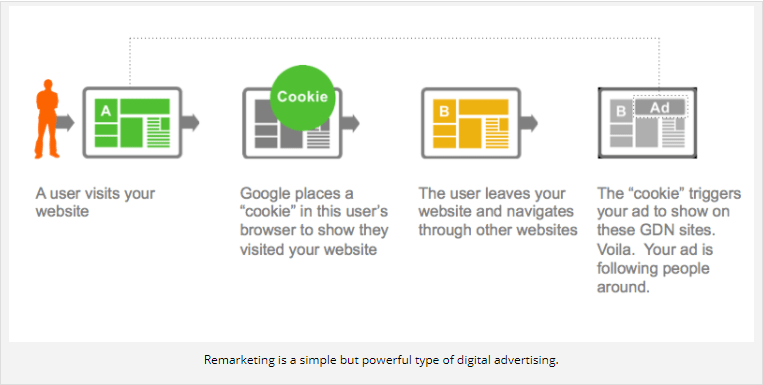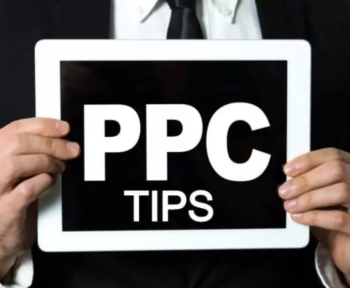Also known as retargeting, Google remarketing is a technique that allows potential customers to follow your Google ads as they move across the Internet. When a user visits your site, a short code snippet (remarketing code) which you place on your website adds them to the remarketing list.
Then when they visit another website that uses the Google Advertising Network, they will be shown your ad. Google lets you customize who sees your remarketing ads. For example, you may prioritize new or returning customers.
Did you know that 97% of first-time visitors to your site leave without buying anything? Because they have to assume that you know them beforehand. Google remarketing ads are very effective to draw visitors back to your website – and improve your digital marketing bottom line.
Just go through the video below to clearly understand Google Remarketing
Table of Contents
How to get started with Google remarketing or retargeting?
To launch the Google remarketing/retargeting campaign, you must have a Google Ads account. You can also use Google AdWords, but the steps are a little different. (Google AdWords remarketing is an older version of remarketing, now done in Google Ads, the new marketing tool in the engine.)
Google will set a tag for you to place on all pages of your site. Once there, it will start collecting data about your visitors.
You can customize your Google remarketing tag to collect data for the target audience (also known as the remarketing audience) on specific user activity, such as mailing list signup or search for a specific product. You can use this information to create lists for specific remarketing campaigns.
It is important to set your remarketing goals in line with your marketing strategy. For example, if you want to send a free shipping offer to everyone who bounces with an item in their cart, you can create an audience for that section. You can design an ad to highlight your offer and Google will display it to a specific audience.
Just go through this video tutorial below explaining step-by-step Google remarketing
How does remarketing work in Google?
All you have to do is place the JavaScript tag on your website provided by Google. The rest will happen automatically. This shortcode keeps track of people who visit your site by placing anonymous cookies in your browsers. This allows Google to follow small pieces and display remarketing ads after your visitors have left your site. Because Google works with large ad exchanges such as the Google Display Network (GDN), we can connect with the audience you want almost anywhere they spend time online. Learn How to rank high on Google.
Why does Google remarketing increase conversions?
Remarketing is a form of personalized advertising that can help attract the attention of buyers who are already interested in your products. Marketing your favorite items with Google and engaging them with new recommendations is an advertising experience that 25% of viewers really enjoy! By being in front of your audience on the web, your brand will always be at the top of your mind. Your ad also offers a comfortable, one-click shopping experience when your visitor is ready to buy.
Advantages of Google Remarketing
Google is not the only company doing remarketing. Its closest competitor is Facebook, which maintains its own retargeting system similar to Google through Facebook advertising. Your website tag sends user information to Facebook and visitors see your ads in their news feed. Here are some of the benefits of using remarketing on Google:

Its range is wide.
Facebook Ads may work well for businesses that rely on social capital, but limit their uses as a remarketing tool. If your customers are not on the platform, your ads will not reach their audience.
The Google Display Network has over two million websites worldwide and reaches 90% of Internet users. By comparison, less than 27% of all Internet users are on Facebook.
It is more customizable.
With the Google Display Network, you will be able to further customize your remarketing campaign. For example, if the buyer who left your cart is interested in children’s clothing, you can place your ads on your clothing websites or create a parent audience section with small children.
In addition to demographic data, the network allows you to customize your ads based on:
- Various tools
- Mobile apps
- The whole country or some geographical area
- Names of places used in Google searches
- Dialect
With their help, you can target your ads on multiple levels. For example, if a baby wear buyer is moving to a neighborhood where your brick-and-mortar store is located, you may see your ad when you open the Google app to check the weather.

You can track ad performance and optimize with Google Analytics.
If you have Google Analytics, you can add tracking code to your Google advertising campaign and see how your remarketing efforts work. If some are working exclusively, you can invest more in those channels and save your money on others.
Analytics can help you further optimize your remarketing campaigns. You can go to your account to enable population and interest reports to see what people have in common with people who have responded to your ads. You can also use this feature on your website, which doubles your ad targeting possibilities.
For example, let’s say you have enabled Analytics on your site and most of the people who left before buying were under 30 years old. You decide to post the offer on sites that target the population, and Analytics tells you specific sites to get better response rates. The next time you target that age group, you can focus on those sites and improve your return on investment.
You can also add UTM or Urchin tracking module to your URL. UTM is a code that allows you to track a particular campaign and specific content in that campaign.
For example, if you are remarketing people who visit a product page, you set the UTM code to see how many users will respond to that campaign. You will also want to track whether free shipping or discounts are more effective. Adding content UTM to both types of offers can see if free shipping leads to more conversions.
You can customize your ad design.
Google lets you choose the graphics and content of your ads, so you can maintain the integrity of your brand voice and image. This flexibility gives you more control over how your marketing campaigns look in personal ads and campaigns.
Hope You find this content interesting and helpful. Don’t forget to like, share, subscribe and leave Your comment related to this topic. Thank You.






1 Comment